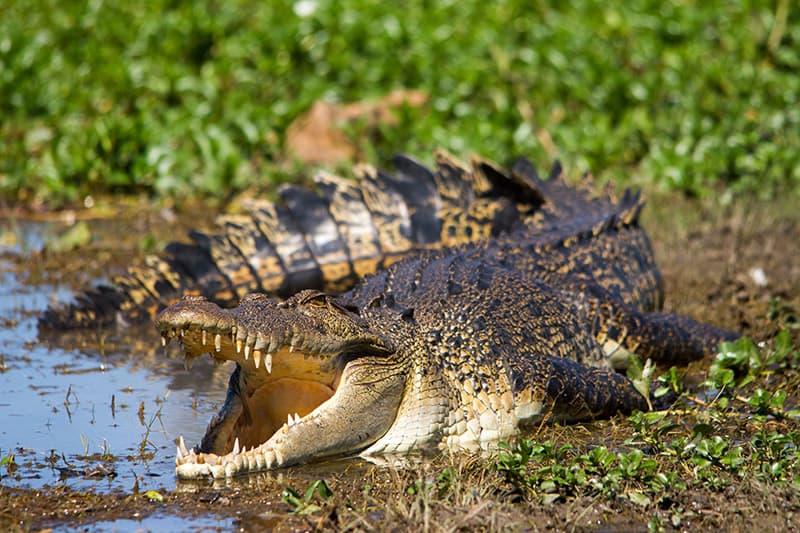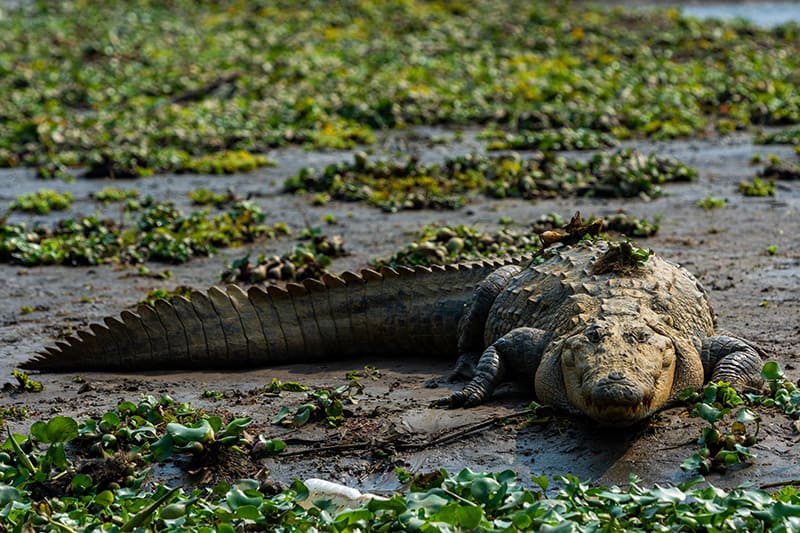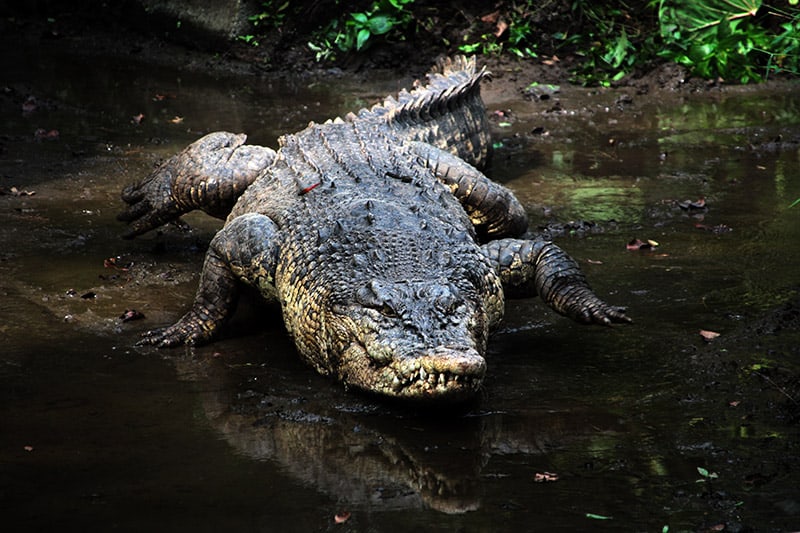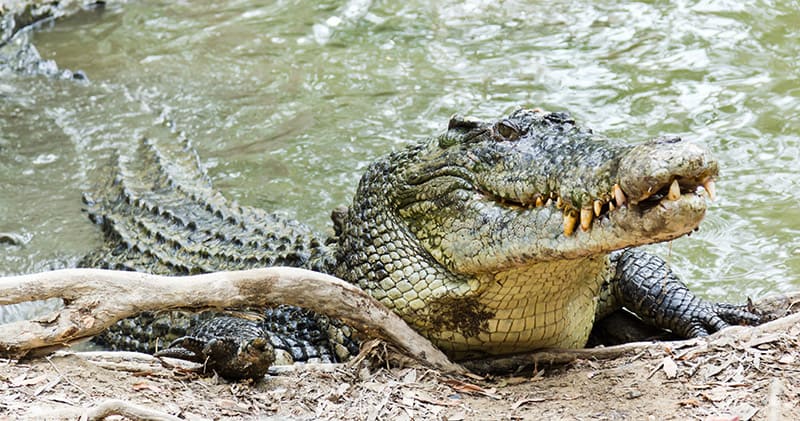The Saltwater Crocodile is the most dangerous and aggressive animal in northern Australia!
I know that normally I do my weekly featured pet on an actual pet, however this week I decided to switch it up a bit and do a post on an animal that is definitely not considered a pet – the saltwater crocodile! I find these creatures absolutely fascinating and they have recently grabbed hold of my interest. Did you know that they are the largest known reptile living today? And they are also considered extremely dangerous and aggressive, making them even more scary (to me) than sharks! Their scientific name is Crocodylus porosus, and they can be found in Australia, Japan, Thailand, Vietnam, Papua New Guinea, Indonesia, the Philippines, Sri Lanka, Singapore, Bangladesh, the Solomon Islands, and along the east coast of India.

They are called “saltwater” crocodiles because they don’t generally hang out in freshwater, although crocodile young are raised in freshwater and they can thrive in freshwater if need be. They like brackish water (meaning has some salt but not as much as seawater) best as adults and can usually be found in waters that are near rivers and coasts. Mangrove swamps are a huge habitat for saltwater crocodiles.
Male crocodiles can reach long lengths of 20 feet! Although there have been cases of some reaching up to 27 feet in length in the wild, this is rare, and females generally only grow up to 10 feet. This still makes for a very large reptile and the males can weigh up to 2,900 pounds.
Their nostrils, eyes, and ears are all located elevated along the top of their head, so they can breathe, see and hear all while staying practically completely submerged and out of sight. They spend little time on land, so this is perfect for their lifestyle.
Another interesting fact is how their eggs hatch. Forty to sixty eggs are laid in each nest (generally from November to March) and they hatch about 90 days later. The interesting part, is that the baby crocodiles become male or female depending on what temperature the eggs are kept at! If the eggs are above 32 degrees Celsius, the crocodiles will become male, and if they are below 30 degrees Celsius, they will become females! However, only 1% or less of the hatchlings will survive to maturity.

I think everyone is probably aware that they have a reputation for being “man-eaters.” Well, they don’t go out of their way to eat humans – but if humans are in their territory, they are considered fair game as far as food goes! They kill 1 to 2 people per year in Australia. Their food includes just about anything they can overpower, including other reptiles, birds, buffalo, wild boars, monkeys, cows, humans, etc. They hunt by using their famous “death roll,” which involves the crocodile grabbing its prey in its jaws (which are extremely powerful) and rolling over and over in the water. This both crushes its victims and can drown them.
One event that really caught my eye was the Battle of Ramree Island. Apparently in 1945 about 1,000 Japanese soldiers were surrounded by British soldiers and had nowhere to retreat other than into the inland swamps. They spent the night traversing the swamps to get to safety and about 400 of them were thought to have been killed by the native crocodiles. It is considered “The Greatest Disaster Suffered from Animals” in the Guinness World Records! It is pretty hard to fathom something like that happening.

So, as an end thought – if you are ever in areas where wild saltwater crocodiles are plentiful, be careful and follow local crocodile safety guidelines!
Though these large and dangerous animals are not pets, there are many types of lizards and other reptiles that are great to keep as pets. Check out Animal-World’s Reptiles, Amphibians, and Land Invertebrate page if you are interested in more information.
Jasmine is a team member at Animal-World and has contributed many articles and write-ups.
Featured Image Credit: Meister Photos, Shutterstock
